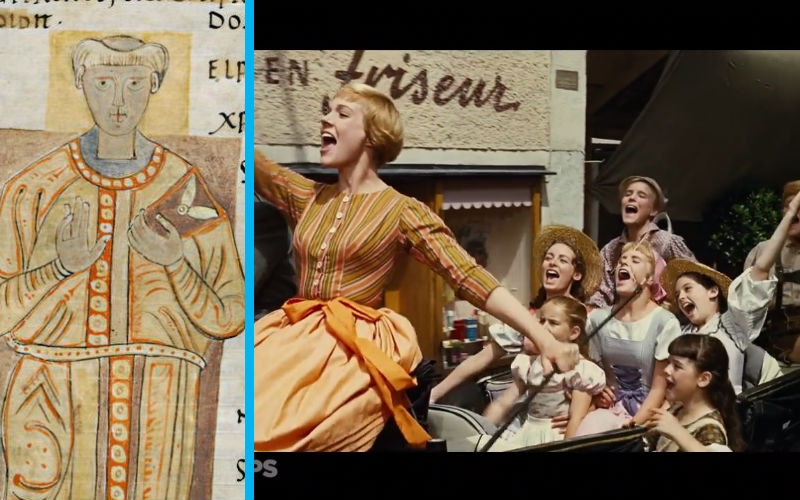The 8th C. Benedictine Monk Who Accidentally Invented Do-Re-Mi

So many cool things have come from Catholics! This is just another example.
You’ve probably heard the song from the musical The Sound of Music called “Do-Re-Mi” (“Do a deer, a female deer,” etc). That song is based on something called solfège, in which each note in a musical scale is given a word, namely do, re, mi, fa, so, la, ti, and then back to do.
Where did this system come from? Well it turns out, at least to the standard theory, it ultimately came from an 8th century Catholic hymn written by a Benedictine monk!
Here’s the story: In the 8th century, an Italian Benedictine monk named Paul the Deacon composed the Latin hymn “Ut queant laxis” in honor of St. John the Baptist.
A few hundred years later in 11th century italy, music theorist Guido of Arezzo created an early version of the solfège system for mysical notation based on the lyrics of Paul the Deacon’s hymn. This was because as the melody moved about the scale, certain key words or syllables fell on successive notes going up.
Here’s the lyrics with the key parts bolded: “Ut queant laxīs resonāre fībrīs Mīra gestōrum famulī tuōrum, Solve pollūtī labiī reātum, Sancte Iōhannēs.”
From this you get: ut, re, mi, fa, so, la.
In 17th century Italy, musicologist Giovanni Battista Doni changed “ut” to “do,” both because it was easier to sing and because it was the first syllable of his last name. He also took the first letters of the last two words to make “si” to complete the scale.
Then in the 19th century, English music educator Sarah Ann Glover changed “si” to “ti” so that each word would begin with a different letter for better differentiation.
That brings us to the modern system: do, re, mi, fa, so, la, ti, do!
What surprised you the most? Let us know in the comments!
[See also: Coptic Christians Bravely Chant Nicene Creed After Bombing in Viral Video]
[See also: The Ancient Christian Chant Hiding In All Your Favorite Movies]